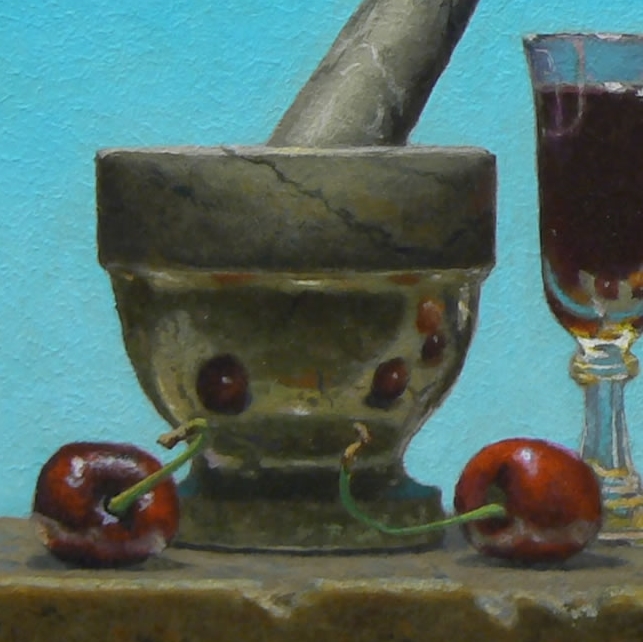
Mirrors are simply surfaces that do an exceptionally good job of reflecting light.
The reality is that nearly all surfaces – even our skin – reflect the light that hits them, and so can loosely be thought of as mirrors.
When we say “mirror”, though, we really mean a surface that can reflect a recognizable image of another object.
For that to happen, the surface needs to be smooth and solid enough to uniformly reflect most of the light that strikes it.
A cotton shirt, for instance, has neither a smooth nor solid surface, and so makes for a poor mirror. Even though it reflects a lot of light, it does not do so in a uniform way, scattering it instead.
But if polished enough (polishing is just smoothing), nearly any hard surface can make a functional mirror – though obviously not as good as glass with a silvered back.
Here, for instance, the marble of the mortar is so highly polished that it does a pretty decent job of reflecting its surroundings.
Note that mirrors do not have to be flat… and that is where all the interesting things happen.